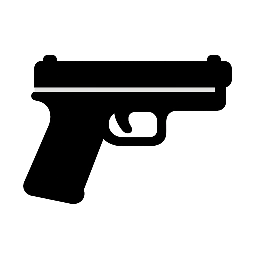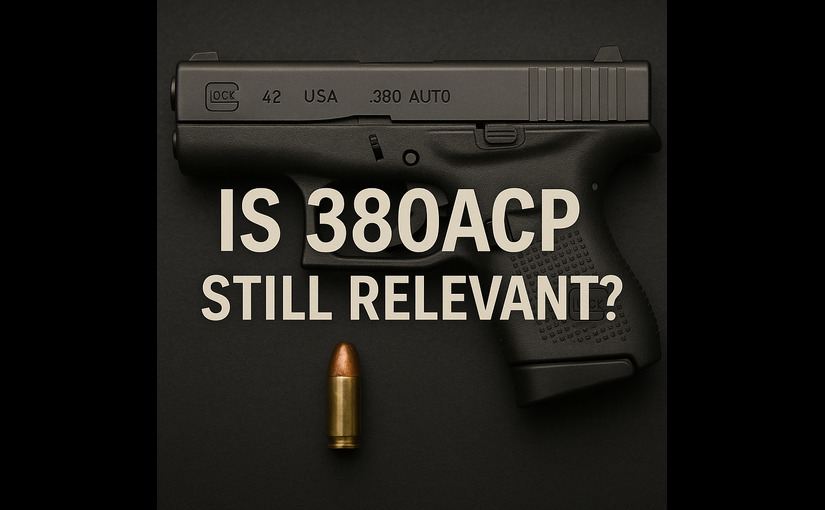The Sig Sauer P238 was the third handgun I ever carried on me. It was actually quite nice; it was light, slim, short and small enough to be carried comfortably under my appendix or in a pocket holster.
The P238 by all accounts is an extremely shootable, easy to carry, and likable gun. Now, as a longtime 9mm loyalist, I cannot help but re-visit the question: Is the .380 ACP still a viable option for personal defense today?
History
The .380 ACP was developed in 1908 by the legendary John Moses Browning for Colt’s New Model 1908 Pocket Hammerless. The pistol saw wide use—not only by civilians but also by U.S. Army officers, the Air Force, the NYPD, and even international police like the Shanghai Municipal Police.
It also earned some infamous associations—Al Capone reportedly carried one. Bonnie Parker used a Colt 1908 to break Clyde Barrow out of jail. John Dillinger had one in his possession when he was gunned down by the FBI.
Across the Atlantic, the .380 (also known as 9mm Short or 9mm Browning) remained popular, especially in early 20th-century Europe. This likely owed to a few factors:
- Military and police pistols were often more about symbolism than stopping power.
- Civilian access to military-grade calibers like 9mm Luger was limited by regulation or supply.
- Concealed carry options were crude; slipping a small pistol into your pocket was a practical solution.
Famously, Gavrilo Princip used an FN Model 1910 chambered in .380 to assassinate Archduke Franz Ferdinand—sparking World War I. Gandhi was assassinated with a Beretta M1934 in .380 ACP decades later.
The .380 ACP Today
After decades of relative obscurity, the .380 ACP made a comeback with the rise of pocket pistols and the concealed carry movement. Glock introduced the model 42; Smith & Wesson released the Shield EZ—clear signs that major manufacturers saw a place for .380 in the current market.
Why? Because the .380 ACP still checks a few important boxes:
- Low recoil: Great for beginners or those with limited hand strength.
- Compact pistols: The smallest, lightest, and most concealable handguns are usually .380s.
- Ease of operation: Many .380 pistols have softer recoil springs, making slides easier to rack.
This makes the .380 ACP a frequent recommendation for:
- New shooters intimidated by larger calibers
- The elderly or people with hand/wrist injuries
- Deep concealment or backup gun scenarios
Recoil & Practicality
Recoil is often dismissed as a non-issue—especially when talking about calibers like 9mm—but that’s an oversimplification. While 9mm recoil isn’t painful, it still affects speed and precision during rapid fire.
Let’s not kid ourselves—winning a gunfight isn’t about caliber bragging rights. It’s about hitting vital areas quickly and repeatedly. Lower recoil means faster follow-up shots and more consistent shot placement, especially under stress. For some shooters, .380 allows for more shots on target in less time than a 9mm does. Put another way: you’re trading some ballistic performance for increased shootability. But is the trade worth it?
Ballistics: The Real Limitation
FBI ballistic testing provides the gold standard for evaluating self-defense ammo: 12″ to 18″ of penetration in gel and reliable expansion. Most modern 9mm loads pass this test consistently. 380 ACP? Not so much.
You generally get to pick one of the following with .380:
- Adequate penetration or
- Reliable expansion
Rarely both.
That’s not ideal when you need your bullet to punch through heavy clothing, bone, and tissue to reach vital organs. Bigger holes bleed more, and deeper holes hit more vital structures. Compare .380 to 9mm:
- 9mm bullets are 21–55% heavier
- 9mm velocity can be 6–30% faster
- Almost all 9mm loads meet and exceed minimum FBI standards
- Most .380 loads fall short in either expansion or penetration
For these reasons, no major police department in the U.S. authorizes .380 ACP as a primary duty weapon.
Do I Recommend The .380?
I carried a P238. I liked it. But I eventually moved on—and I think that says a lot.
I still recommend .380 ACP in specific situations:
- If you have hand strength limitations
- If you’re recoil-sensitive
- If deep concealment is a must
- If you’re willing to train with it and choose your ammo carefully while considering its limitations
But let’s be clear: the 9mm is better. It’s more effective ballistically. It’s widely available. And today’s market is full of easy-to-carry 9mm pistols—like the Sig P365, Glock 43X, or the Springfield Hellcat—that rival or even beat .380s in size and shootability.
If you can shoot 9mm confidently, you should.
If you can’t—yet—the .380 ACP is a viable stepping stone. But know its limitations, and don’t stop pushing your comfort zone.
After all, you don’t get to choose who attacks you. They may be bigger, stronger, or drug-fueled. Your gear should be chosen with the worst-case scenario in mind.


Leave a Reply